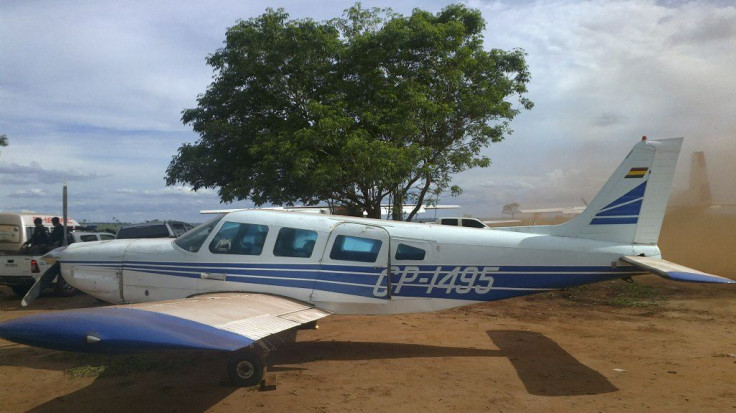
At a clandestine airstrip near the Bolivian border with Brazil, Bolivian police drug squads saw a man standing on the runway waving at an approaching low-flying plane. They waited and watched, then as bag after bag tumbled from it to the airstrip below, the agents emerged from their hiding place and seized the bags: 26 in total, which police say they later found to be holding combined $1 million. That cash, Interior Minister Carlos Romero said in a statement on Wednesday, was intended for collection by drug traffickers on the ground, who would then use it either to finance the construction of a cocaine production center or to set up a fake business for laundering the money in that remote province of Santa Cruz.
"The plane threw white bags containing bundles of money ... 26 different cuts with a total value of $1 million. The plane, which could not be identified, continued its flight with destination unknown," read the police statement, according to Fox News. The interior minister said that three people who had been waiting on the ground to pick up the bags had been arrested in connection with the operation. Several guns, phones vehicles were also seized by police. Romero heralded the seizures as a "major blow" to drug trafficking in a country which remains one of the top three cocaine producers in the world, along with Peru and Colombia. The production of the coca leaf, long used as a mild stimulant in the high-altitude towns in the Bolivian Andes, is legal in relatively small quantities, but the cocaine which is processed from those leaves is still illegal.
Bolivian traffickers are finding an growing market for cocaine in neighboring Brazil. According to Fox, Bolivian anti-drug teams confiscated about 10 tons of cocaine from gangs in the remote eastern region near the 800-mile Brazilian border, many of whom had links to drug gangs in Brazil, Paraguay, Chile and Argentina. In this case, the money dropped by the plane was in US dollar bills of various denominations. It was also wrapped with a seal from a bank in Paraguay.
The Brazilian border is increasingly becoming the focus of anti-drug law enforcement operations outside of Bolivian territory as well. The Amazonian Trapezoid, where Peru, Colombia and Brazil intersect, is an especially key bit of territory for drug (and arms) smuggling, as the isolated jungle terrain and lack of security presence make transportation of contraband easy for groups based there.
RELATED: Latin American Drug Cartels Targeting East Asia, Says US State Department
© 2025 Latin Times. All rights reserved. Do not reproduce without permission.




